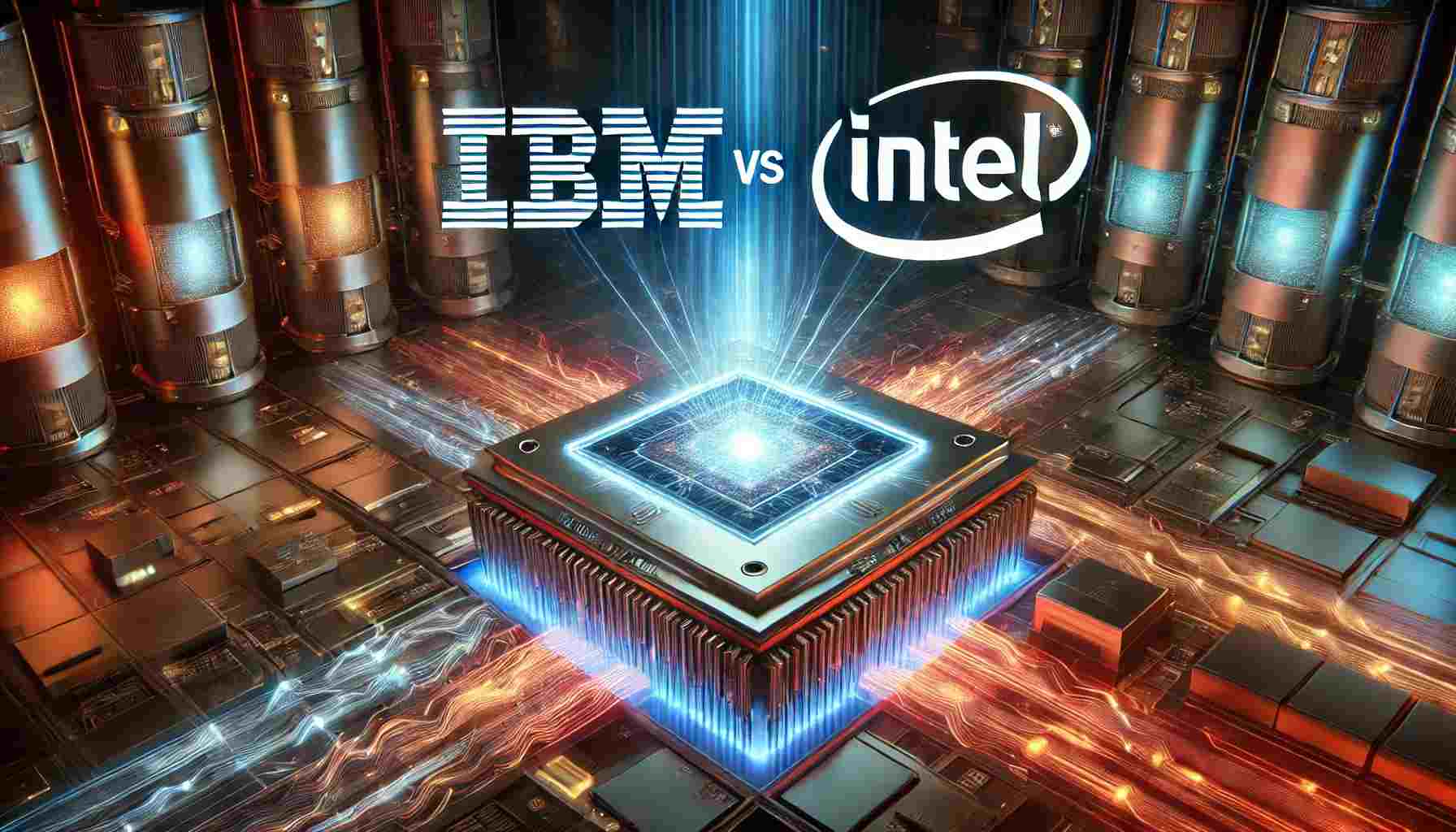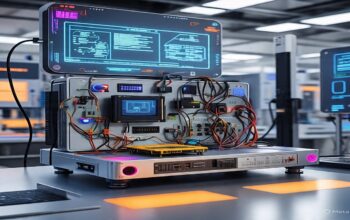Can you Imagine a computer that can find puzzles in seconds that would confound the world’s most advanced supercomputers for thousands of years? That’s the potential of quantum computing. But how on earth do you build such a monster? Tech titans IBM and Intel are running toward this future but have plans. Let’s walk through their strategies, what the experts predict, and who is likely to emerge as the victor in this high-stakes battle.
Covered Contents
ToggleQuantum Computing: More Stranger Than Science Fiction
Leave the 0s and 1s of traditional computers behind. Quantum computers are based on qubits, which are 0 and 1 simultaneously (thanks, superposition) and eerily entwined across space (entanglement). These properties enable quantum computers to try an unfathomable number of solutions simultaneously. There’s a catch, though: qubits are incredibly sensitive. They have to be cooled to just above –460°F (-273°C)—below the temperature of deep space—and shielded from all noise.
Imagine qubits as a spinning coin in the air: In the air, not heads or tails but both. Now link thousands of these “spinning coins” together and you’ve got a quantum computer.
IBM’s Quantum Playbook: Superconductors and Cloud Power
The Tech
IBM isn’t merely constructing quantum computers. It is developing futuristic machines that resemble something out of a sci-fi film. Picture a chandelier of golden circuits, each component supercooled to close to absolute zero, all humming in sweet harmony to solve problems beyond today’s top supercomputers. These superconducting qubits, contained within IBM’s Quantum System Two, are shattering computational boundaries. With their latest chip, Heron (156 qubits), IBM has slashed error rates and doubled processing speed. Meanwhile, their Condor prototype (1,000+ qubits) is coming our way by 2025, delivering practical quantum sooner.
IBM is betting big on superconducting qubits, tiny circuits operating at ultra-cold temperatures. Their sleek, modular quantum computers, like IBM’s Quantum System Two, contain hundreds of these fragile qubits in a fridge-sized container. IBM’s new chip, Heron (156 qubits), is quicker and less prone to errors, while its Condor prototype (1,000+ qubits) should be available by 2025
Why It’s Cool
Cloud Access: Anyone can tinker with IBM’s quantum machines through their IBM Quantum Platform and Qiskit software. More than 2,000 organizations, from startups to NASA, employ it today.
Ecosystem Dominance: IBM’s open-source tools and tutorials have taught a generation of quantum developers.
Roadmap to 2029: IBM is focusing on error-corrected qubits and hybrid systems combining quantum and classical computing.
Expert Take:
“IBM’s hardware and software provide users with a playground to test real-world quantum algorithms today,” says IBM’s Quantum VP Jay Gambetta.
Intel’s Quantum Gambit: Silicon Chips and Mass Production
The Tech
Intel sidesteps superconductors for silicon spin qubits—tiny chips made with the same methods as traditional computer chips. Their Tunnel Falls chip (12 qubits) and Pando Tree control chip are designed to tame quantum wiring madness. The aim? Print qubits such as iPhone processors with existing factories.
In contrast to IBM’s computers, which need to be cooled to ultracold temperatures, Intel’s silicon spin qubits may work at slightly warmer temperatures, lessening the expense and complexity of quantum computers. If it works, it will make quantum computers as ubiquitous as today’s microchips, transforming industries from AI to cryptography.
Why It’s Bold
Familiar Tech: Leans on Intel’s chip-making muscle. Quantum chips rolling off the same production lines as your laptop CPU, imagine.
Scalability: Silicon qubits are smaller than a grain of salt—potentially millions could be on a single chip.
Warmer Temps?: They might work at slightly warmer temperatures than IBM’s, simplifying cooling costs.
But… Intel’s qubits lag in terms of stability and complexity.
Expert Take:
“If Intel nails this, quantum computers could scale like classic chips,” says Intel’s Quantum Director Jim Clarke.
Head-to-Head: Who’s Leading Now—And Who’s Built for Tomorrow?
Feature | IBM | Intel |
Qubit Type | Superconducting circuits | Silicon spin qubits |
Accessibility | Cloud-based, open to all | Lab prototypes only |
Ecosystem | Massive via Qiskit | Growing SDK, less mature |
Scalability Edge | Proven reliability, clear roadmap | Mass-production potential |
Best For | Experimenting today | Betting on the future |
The Conclusion: The Race Is Not Over
By 2025: IBM is the leader without any doubt. Their devices are already solving practical issues in climate modeling and healthcare development. due to their cloud access and active developer community.
By 2030: Intel might overtake them. Their manufacturing skills would allow them to provide the market with scalable, cost-effective quantum chips—the “quantum revolution” that everyone has been waiting for—should they be able to break silicon qubit stability.
Final Word:
The conflict between the two giants is compellingly wrapped up in the final word. It depicts Intel as the next manufacturer who could make quantum computing scalable and widely available, while IBM is shown as the present leader, an experimental lab powering quantum developments. The gap shows who is likely to win in the long run, not just who leads right now. It confers the competition the air of a digital drama playing out, with innovations today influencing tomorrow’s industrial landscape.
What Comes Next?
IBM: Keep an eye on hybrid cloud-quantum technologies and more than 1,000 qubit devices.
Intel: The rules might change if qubit coherence evolves.
The goal of the quantum marathon is to see who can first exploit the transformative potential of this technology, not who is “better.” Hold on tight. 🔥
For further details, refer to IBM’s roadmap here



3 thoughts on “IBM Quantum Computers vs. Intel Quantum Computers: A Clear and Exciting Expert Comparison”